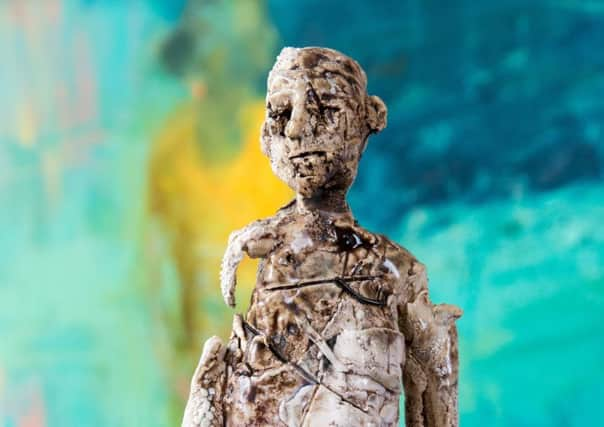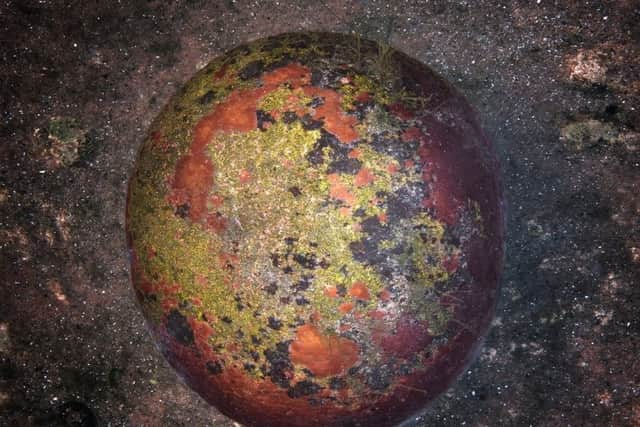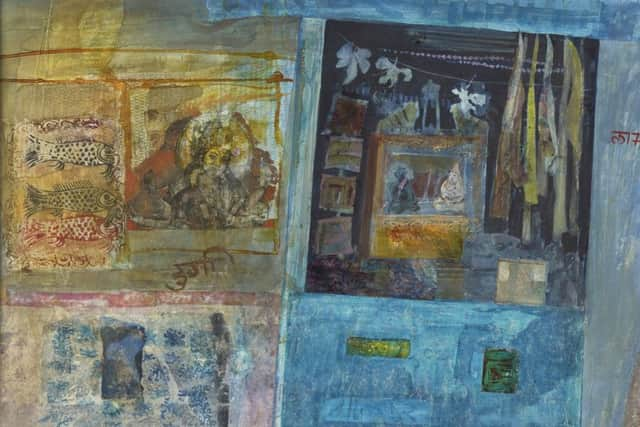Art reviews: Ken Dingwall | Linda Lashford | Henry Jabbour | Victoria Crowe | Alison Kinnaird


Ken Dingwall: In Retrospect, Cairn Gallery, Pittenweem ****
Linda Lashford, Rhue Art, near Ullapool ****
Henry Jabbour: A Life More Human, Union Gallery, Edinburgh ****


Victoria Crowe: Fifty Years of Drawing and Thinking, Scotttish Gallery, Edinburgh ****
Alison Kinnaird, Shillinghill Studios, Temple ****
Advertisement
Hide AdAdvertisement
Hide AdThe Cairn Gallery in Pittenweem is very much the personal project of Thomas and Laurie Clarke who, after a good many years operating in the south, brought their gallery to Scotland. The space they have created is white, minimal, exquisitely appointed and beautifully lit. Its character reflects the kind of art they have supported: thoughtful, minimal and meticulously executed. The current show of Ken Dingwall’s work fits the bill precisely. With only nine works, it is sparely hung, but with Dingwall less is always more. His work invites close examination and then reveals its complexity which, for all its apparent reticence, can be fierce and passionate. The show is called In Retrospect and the works range over more than 40 years, the earliest from 1976 and the most recent made this year. Called Protection, the work from 1976 is composed of three unframed canvasses, six inches square, dark grey and rugged in texture. You have to look at them obliquely to see a hint of fiery red breaking through the grey where the canvass is folded over the stretcher. From much the same time, a very beautiful work, Edge, has a similar effect but with the hidden fire glimmering through the glossy surface of worked graphite on paper. In a similar way in Passage II, paper covered in glossy graphite marks is laid over matt black. The twin canvasses of Study for Held from some years later have the same character as Protection, though the dark surface is now a sequence of echoing curves. In his constructions there are similar effects as narrow openings and contrasted colours suggest mysterious interiors. In Protective Front, for instance, intense pink reveals a green lining. Opening Passage III is a closed triptych, scarlet outside, but with cutaway corners revealing a dark interior. Effects like these suggest the layering of experience, of emotion that may be intense but is, or perhaps can only ever be partly acknowledged.
Pittenweem is a seaside town, but in Cairn you are not aware of the sea. The same cannot be said of Rhue Art near Ullapool, which is situated on a steep hillside above Loch Broom, west of Ullapool. It is a lovely situation although, set just before the loch opens to the sea, it must be open to the Atlantic’s winter gales. Currently the gallery is showing Undersong by Linda Lashford, a collection of remarkable photographs of the sea and the shoreline. If you look the artist up online, you will find she is also a former cancer specialist, the author or co-author of an impressive series of medical research papers, principally related to cancer in children. Hitherto she has pretty much been itinerant, but the work on view here is the result of a more settled period passed in the western Highlands. The title of the show, Undersong, reflects how during that time she has recorded miniature landscapes beneath the wider one. She has searched particularly along the shoreline for places where geology and marine growth have conspired to create landscapes within the landscape at the sea’s edge and


she has produced a series of photographs of richly marked, or encrusted, near spherical stones, actual worlds, miniature globes whose beautiful patterns mimic the greater globe of which they are a minute part. The results are remarkable. They are also set in context by a group of pictures where she raised her eyes and her lens above the shoreline to the wider sea. By using extended exposures and manipulating the light she has infused these seascapes with a se nse both of time and of timelessness.
By coincidence, Henry Jabbour – currently showing A Life More Human at the Union Gallery in Edinburgh – also left a distinguished career, in his case as a biological scientist, to take up another as an artist. He made the break by going as a mature student first to Leith School of Art and then to the New York Academy of Art. His show consists principally of the isolated human image in painting, sculpture and prints. The paintings are richly coloured but roughly brushed so that the figures, while vigorously present, also seem to be struggling to preserve their identity in the stream of time and space. These are existentialist pictures, reflecting the individual search for stable identity in the flux of experience. This is equally striking in the artist’s prints of sparely drawn and partly erased figures and his remarkable sculpture. The latter too are figures. With one exception, they are roughly modelled in clay, and like the paintings they again suggest the individual’s struggle to find meaning or even coherence. With one exception these are all cast in bronze. The exception is a fractured figure in glazed ceramic, but, in case we should find any misplaced reassurance in the smoothness of the glaze, a nail is driven through the whole composition.
With the exhibition of her portraits and her major retrospective at the Edinburgh City Art Centre, Victoria Crowe has had quite an innings recently. Now there is more. Her wonderful draughtsmanship is the basis of everything she does, so her exhibition at the Scottish Gallery, 50 Years Drawing and Thinking, principally of drawings, prints and watercolours, is much more than just a follow on to capitalise on recent successes: it is a parallel but more intimate retrospective. It goes right back to student work and includes beautiful drawings made at Kittleyknowe when she was painting her now-famous Shepherd’s Life pictures. There are also beautiful plant and tree studies, drawings of Venice and much else including a display of sketch books to complement those on view in her retrospective, which is indeed what the whole show does very beautifully.
Alison Kinnaird’s chosen medium is glass engraving, but that too depends on drawing. Indeed she occasionally incorporates rapid sketches of real people, unaware that they are being drawn, into her work. Passing Through, for instance, is a series of people seen just waiting, but now transfigured by light and colour in the transparent medium as though suspended in time. While the principal medium for her imagery is still engraving, however, using cutting and lamination she has also developed it to create possibilities of colour and depth that are original and quite new. Her studio in Temple has been open as an exhibition during the Festival and is still open by appointment. It is worth a visit. Duncan Macmillan
Ken Dingwall until 29 September; Linda Lashford until 31 October, Henry Jabbour until 9 September; Victoria Crowe until 28 September; Alison Kinnaird, viewing by appointment, tel. 01875 830328